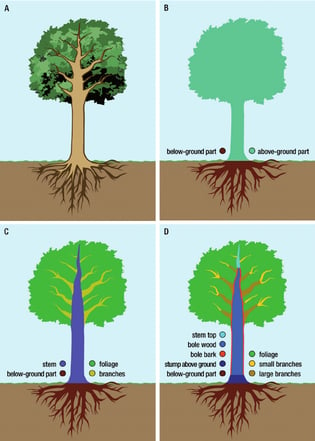
Home / Here on Earth / Are Your Trees Ready for Hurricane Season?
You can make your trees ready for the hurricane season by proactively implementing tree maintenance and focusing on detecting and addressing tree defects that could lead to significant damage during storms.
Hurricane season is here for the east coast and it's time to get ready for the worst Mother Nature can dish out. To take some of the stress out of hurricane prep, we'll address the culprit of some of the most catastrophic damage during and after hurricanes, and change the way you look at your neighborhood trees.
It Takes More than Trimming
Tree trimming and pruning are important staples of a lawn maintenance plan, and it's probably already part of your hurricane plan. But trimming, even if done regularly, doesn’t hurricane proof your trees.
While, yes, trees can specially adapt to survive hurricane-force winds and rain, many trees have underlying or unseen issues. This means an otherwise healthy-looking tree could secretly be going through Tree Failure.
Tree Failure is defined as a tree that has sustained structural damage to the trunk, branch, or roots. This damage, though possibly unseen, has catastrophic consequences when paired with hurricane force wind and rain.
Getting to The Root Cause
While Tree Failure can be difficult to detect, it is not impossible. To do so, we’ll identify the Four Main Tree Defects that can cause failure.
-
Decay: A silent yet deadly tree assassin, decay is caused when tree bark becomes wounded, allowing microbes and fungi to feed on the tree. Visible fungi are a good indicator of decay, but remember that decay can also effect the roots.
-
Root Defects: Roots are not only critical to the structure and stability of a tree, they also act as the trees life support, sucking up water and nutrients from deep in the ground to nourish the tree. Look out for exposed or severed roots and trees that are leaning or swaying.
-
Form: Some native Floridian trees have adapted a form that protects them against hurricanes, while a lot of non-native trees have forms that make them more vulnerable. Trees with forks or that are less adapted species such as maple or ash pose a higher threat.
-
Site Issues: Trees planted close together, near buildings, or paired with other, more demanding tree species can experience lack of oxygen, improper drainage, and soil compaction. A general rule of thumb is that for every six inches of a tree’s diameter, it needs five more feet of space to itself.
Palm or Ticking Time Bomb?
It can be difficult for untrained eyes to recognize defects, but waiting until a hurricane to see which tree fails can have catastrophic results. In 2018, Hurricane Michael dumped nearly 23 million pounds of tree debris across eight counties.
Similarly, recently on August 30, 2023, Hurricane Idalia struck Florida with incredible force, moving as swiftly as a speeding train. It caused significant damage by splitting trees, tearing off hotel roofs, and even causing small cars to become submerged like boats. That means your failed tree is not only a threat to your community but every community for miles around.
When it comes to hurricane preparedness, tree maintenance is often overlooked but crucial. Don't wait until a storm hits; ensure your trees are hurricane-ready with Down To Earth Landscape & Irrigation. Our expert tree services go beyond trimming to detect and address underlying issues that could lead to Tree Failure during a hurricane. Trust us to help protect your community from potential catastrophe.


.jpg?width=400&height=297&name=DTEL-%20Blog%20(16).jpg)